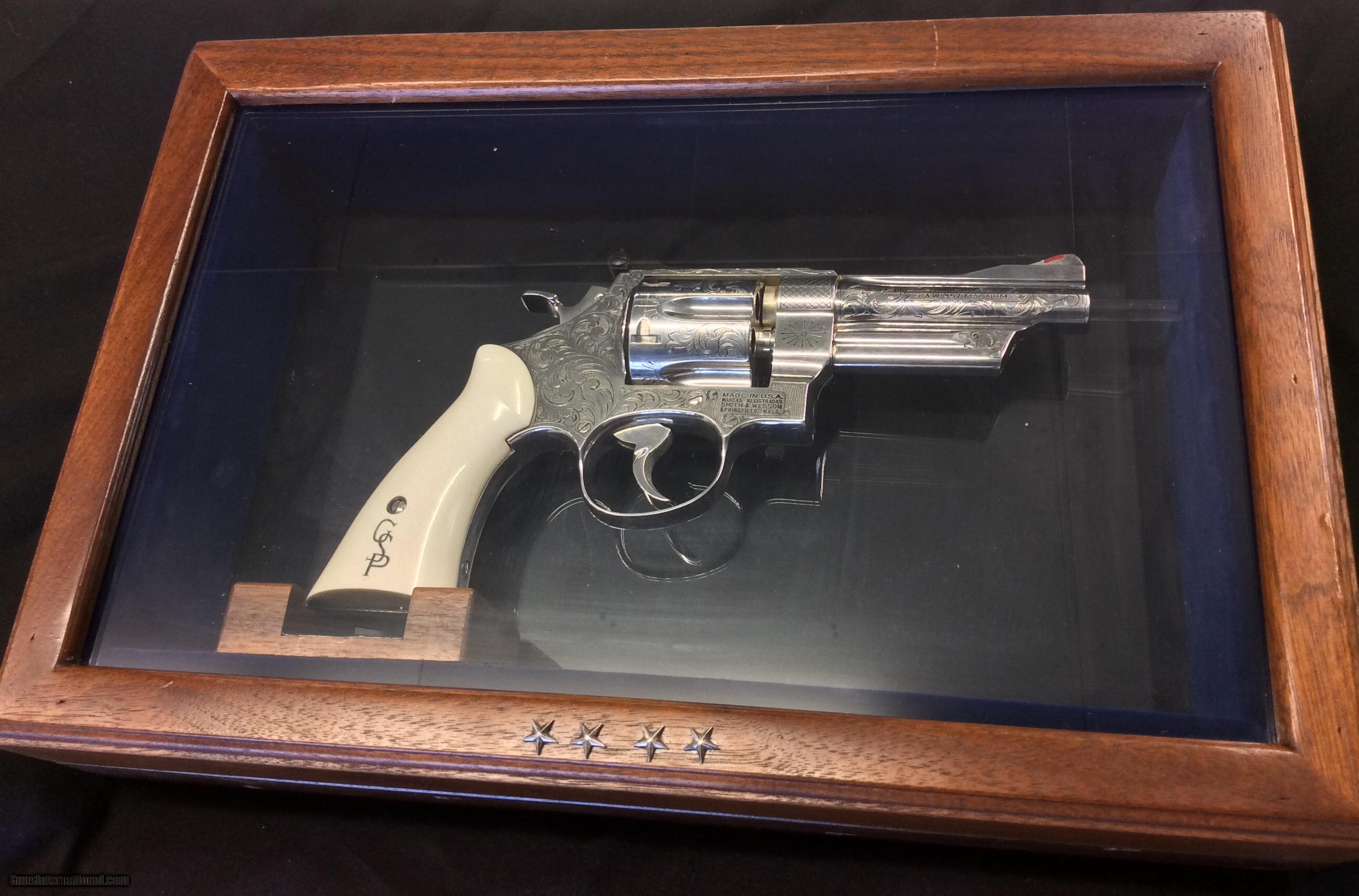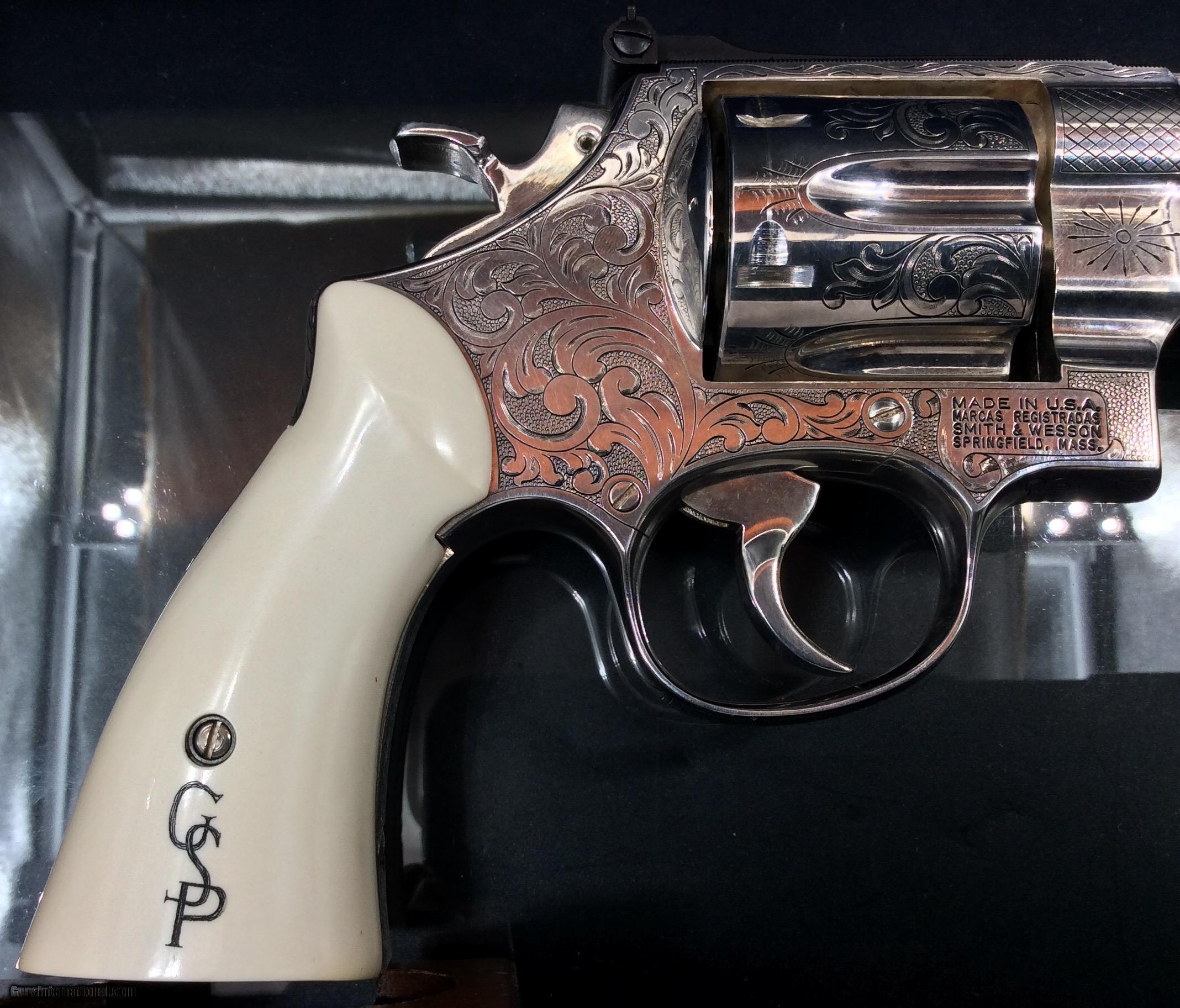Category: Uncategorized
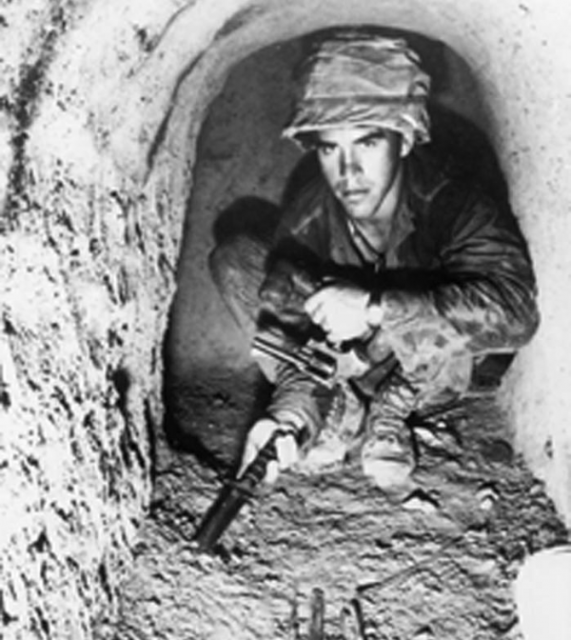
Vietnam has a hidden history of weapon development not known to many. Throughout the conflict, the United States military invested heavily in a wide variety of projects that aimed to better equip conventional forces for an unconventional war. This effort led to a great many projects being developed, but few that proved effective enough to move forward. One of the few is the subject of today’s article: the Quiet Special Purpose Revolver, aka the Tunnel Weapon.
The war in Vietnam was a brutal example of asymmetric warfare. One of the biggest challenges for American troops was the broad and effective use of tunnels by Vietnamese communist forces. These holes allowed enemy forces to hide themselves, their weapons, and more from American forces on the ground and in the air, creating a strategic advantage for the North Vietnamese. From a tactical perspective, the use of tunnels was genius. American forces weren’t ready for it, and it was a simple, inexpensive solution to a massive problem that was America’s superior military might.
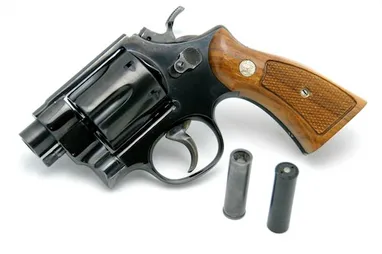
American forces didn’t have any other option but to take to the tunnels, where the defenders had the advantage and the fighting became ultra-close and generally quite brutal. To become more efficient at storming these tunnels, American troops lneeded specialized weapons, and one such weapon was the Quiet Special Purpose Revolver.
Related: S&W Model 15: America’s last revolver is finally leaving service
The terrifying challenges facing Tunnel Rats
The sidearm of choice for American troops at the time was the M1911A1, and by all accounts, the general issue 1911 served well but wasn’t great for the tunnels. Tunnels did require a handgun, there was no doubt about that. Most of the time, the soldier storming the tunnel crawled on their hands and knees, which made the use of a long gun impossible. Accuracy was also an issue. Get on your hands and knees in a dark, tight tunnel and see how accurate you can be with a handgun in a firefight… it was probably even harder for the incredible men who climbed into these tunnels than we can even really appreciate now.
To make matters worse, handguns are tough to shoot well in general, and in a tunnel, any gunfire is extremely loud. In a dark tunnel, the flash is also quite bright. In these types of situations, a shotgun might be best… but good luck handling a shotgun in such tight quarters. So the Pentagon set about built a handgun-sized weapon that fired multiple projectiles at a time, with additional requirements to reduce both its sound and muzzle flash.
These special requests led to the development of the Quiet Special Purpose Revolver.
Related: The men with the green faces: The birth of the Navy SEALs in Vietnam
The basis for the Tunnel Weapon
AAI, or Advanced Armament Industries, worked with the Army to develop the QSPR in 1969. The requirements were simple. The weapon would fire multiple projectiles at a reduced sound level and be effective out to 50 feet. The weapon needed to be a repeater, be reloadable, and weigh less than 40 ounces.
When we say repeater, we don’t necessarily mean semi-automatic. We mean a weapon capable of firing more than a round before it needs to be reloaded. A revolver qualifies as a repeater, so it seems logical that a very big and (later on) very famous revolver became the basis for the Quiet Special Purpose Revolver.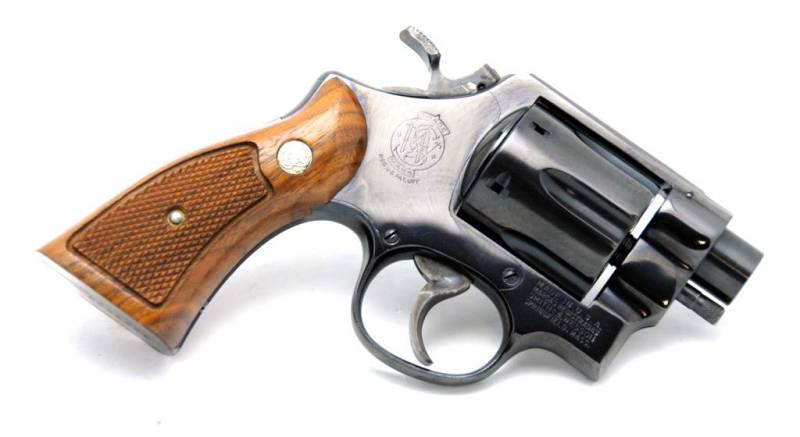
With these requirements in mind, the engineers took an S&W Model 29 revolver and went to work. If you’re familiar with Dirty Harry, the movie detective with a bad attitude who famously wielded the big 44 Magnum pistol, then you’re already familiar with what would become the Quiet Special Purpose Revolver. The S&W Model 29 was a modern design for the time and featured a swing-out cylinder for quick reloading and a double-action design for easy follow-up shots. The S&W 29 held six rounds, and so would the QSPR.
Related: The 5 worst service weapons the US ever issued its troops
Building the QSPR
First, they cut the barrel down to nearly nothing and eliminated its unnecessary rifling entirely. In fact, the pistol was purposefully turned into a smoothbore weapon.
The nature of the ammunition ensured that a standard automatic cartridge could not be used. But no one could get away with calling the 44 Magnum round small. You can actually credit the case length of a 44 Magnum for ensuring the length of the cylinder was enough to handle a multi-projectile round.
The new round, called 10mm QSRP, dramatically reduced both flash and noise. Each shell contained ten pellets contained within a sabot. AAI hermetically sealed each round, and each case acted as its own disposable suppressor. A primer ignited gun powder which pushed a piston which then propelled the sabot full of shot through the outer seal.

The piston then resealed the cartridge, which contained most of the noise and reduced sound and almost entirely eliminated flash. The Quiet Special Purpose Revolver ended up weighing 38 ounces while being fairly short in overall length.
Related: The strangest Spec-Ops firearms in SOCOM’s armory
In-Service
According to numerous Army reports, a few weapons were built and sent to Vietnam for testing. Apparently, one ended up with MACVSOG, according to heavily redacted documents. It’s tough to find much in the way of field reports, but the Army Progress reported that it worked seemingly more or less just the way it was designed—good up close, but not great from a distance.
Digging through archives, I found a report from when Ranger team Oregon engaged seven to ten Vietnamese fighters. A Ranger armed with the QSRP engaged one enemy at 15 feet and immediately dropped him to the ground. That same Ranger fired twice at another enemy at 40 feet, but the enemy escaped.
The report called the weapon the .44 Mag tunnel weapon, and outlined a number of pressing issues that still needed to be worked out, including malfunctions and misfires caused by the new ammunition.
Another July 1972 report suggests that these issues were resolved by adding a “helper spring” and making changes to the ammunition’s design.
“A secondary or helper spring was added to the weapons mainspring that provided a 50 increase in firing pin energy and eliminated mainspring degradation. The ammunition was redesigned with fewer parts and the primer was repositioned and exposed at the base of the round for direct contact by the firing pin as in conventional ammunition. These design improvements resulted in not a single misfire throughout the development, assurance, and acceptance tests associated with this program.”
The result was so successful that this report seemingly granted the new gun its Quiet, Special-Purpose Revolver (QSPR) title along the way:
“The results of this evaluation indicated that the weapon system was well received primarily because the low firing noise permitted use of the weapon without giving away the users position,” the report reads.
“In addition to its tunnel exploration role, the weapon was used in ambush situations and in search and destroy operations. Because of this, the weapon is now designated the Quiet, Special-Purpose Revolver QSPR. “
Around this time, the war was ending, and as such, the QSPR project got sent to the back burner. When the war finally ended, so did any interest in a special-purpose revolver designed for the sort of fighting no one ever hoped to have to do again. Three samples exist to this day, two in Army Museums and one in the ATF reference collection. Despite how valuable such a weapon could be to the few who would need to wield it, the Tunnel WEapons was one of the many projects that started and stopped within the confines of the Vietnam war.
While the Tunnel Weapons might not have been successful, several more of those Vietnam efforts ultimately were. The list includes the beginnings of the M203, the Mk 19, and suppressors for special operations use. The QSPR revolver and its what-if history fascinates me.
103 Gun Show Tips by J.S.T. Andrews
Attending a gun show can be quite the experience even for veteran firearm enthusiasts. Whether you’re there to buy, sell or trade at gun & knife shows it’s always good to be prepared. If you’re not already planning a trip to the gun show, now is the time to start!
Gun Show & Knife Basics
- Call Ahead. It’s ALWAYS best practice to call ahead to verify dates, times and the location.
- Be Polite. It will go a long way to provide a great show experience for everyone involved.
- Safety. Make sure all firearms are unloaded and secure. (Resource: Project ChildSafe’s Top Ten Tips for Firearm Safety)
- Guns Aren’t Toys. Don’t treat them like ones.
- Respect. Return firearms, knives and merchandise the way you found it.
- Empty your magazine(s). Even if your carry is open and secured with a tie your magazine should be empty of ammo.
- Wire Ties. Many promoters require all firearms to be wire-tied through the action.
- Check in your firearm(s). Many times it’s required to check your firearm(s) in at the front door.
- Properly handle firearm(s). Nothing is worse than pointing a firearm (even if it’s unloaded and the action is open) at someone.
- Open the Action. Every time you handle a firearm check the action to ensure it’s unloaded.
- Don’t Sweep! Never point the barrel towards someone.
- It’s Sharp! Don’t ever touch the blade or edge of a knife.
- It’ll Snap! Never close a folding knife hard. Not only can you seriously injure yourself, but it can break the handle or backspring.
- One Blade. Only ever open a single blade at a time (including multi-bladed knives).
- Never Interfere. Don’t interfere in a deal between a buyer and seller. Do not comment on any interaction that is not your own.
- Know the State Laws. No Excuses.
- City and County Laws. Sometimes they are different. Check local ordinances before attending a show.
- Practice proper safety for firearms left in your vehicle. (Resource: Project ChildSafe’s Firearms Safety in Vehicles)
Gun Shows Tips for Attendees
- Show Up Early. Some of the best sales and deals will happen in the early hours of the show.
- Check Everything. Don’t stop at the first table you see. Check the entire show before making a purchase.
- On the Contrary, also show up the last few hours of the show. Many vendors will have last-minute specials. (The less they have to bring home the better.)
- Take Cash. Cash is king and sometimes it can help to get you a better deal
- Not all venues have an ATM readily available.
- Many vendors will not accept checks.
- Some vendors will charge a 3% to 4% fee on credit card purchases.
- Dress for the occasion. Is the gun show outside or inside? Make sure you are wearing the appropriate shoes.
- Bring a small dolly. Ammo is heavy. If you plan on purchasing a lot of ammo make sure you have the means to transport it.
- Wear a backpack (when permitted). This helps keep your hands free while browsing.
- Drink Water. You can easily fit a few bottles of water in your backpack. It’s always a good idea to stay hydrated. Time flies when you’re at a good show.
- Find a Coupon. Sometimes gun show promoters will provide a coupon in a local newspaper or ad.
- Have identification readily available. 99% of the time you will be asked to provide a government-issued ID when purchasing a firearm.
- Bring your CCL. Depending on state laws and the type of firearm you purchase, this can allow you to walk out the same day with your new firearm.
- Ask. If there’s an item you’re looking for, ask the dealer. Sometimes they have it behind the table or you simply passed over it.
- Talk to the seller. Adding another firearm to your collection is always good! Make it even end better by getting to know the vendor. It’s possible you might even up to making a lasting relationship (and get good deals from it!).
- Don’t Touch! Often vendors will have a “Don’t Touch without permission” sign. Please respect it.
- Ask before handling. Even without the presence of a sign, it’s not always best practice to open the action on every gun you see a vendor selling. In many states, vendors are required to secure every firearm that’s on display (Thus all but negating Tip #4). Ask the vendor if it’s “okay” to handle the firearm.
- Don’t Grab. Unless an item is being handed to you, never take it from the dealer’s hand.
- Serious Inquiries Only. Don’t ask the dealer to cut the zip-tie if you have no intentions of buying the firearm.
- Don’t dry-fire. Sometimes this can damage the firing pin on a firearm. Ask the seller for permission and do a safety check.
- Haggle. Don’t be afraid to try and get a better deal. What’s the worst they will say, “No”?
- Sometimes it’s a game. This expands on the previous tip because some dealers really do love to haggle.
- Don’t Be Rude. If you throw out a ridiculous offer to a dealer, more than likely you’ll get laughed at.
- Bring a Calculator (or your phone). Don’t trust your math. Don’t trust the dealer’s math. Don’t trust your buddy’s math. Use. The. Calculator.
- Price Check. Use your phone; check other dealers for better deals.
- Internet Pricing. Keep in mind that prices on the internet are not always the “best”. Many times additional fees are added including shipping, handling, transfer fees, etc… Also, know that if you can’t pick up the gun in person it usually has to be shipped to a local FFL (more fees).
- Be Patient. If you’re in a rush you’ll most likely miss the best deals.
- Wholesale. Keep in mind when selling your firearm that the dealer buying it has to re-sell it.
- Be Reasonable. Remember that even though you may have paid $500 for your item last month, last year, or 10 years ago does not mean it still holds the same value.
- Rarity is King. Many collectors will go crazy over extremely rare firearms.
- Bulk Pricing. Often Dealers will offer bulk discounts on ammo.
- Buy Accessories. From working gun shows as a dealer, I know it’s not always possible to give a discount on a firearm. However, throwing in a holster, cleaning kit or accessory was usually applicable.
- Consider Storage.As a gun owner, you have plenty of options for proper firearm storage. Pick the one that’s right for you. (Resource: Project ChildSafe’s Gun Storage Infographic)
- Don’t Believe everything you hear. Dealers are salesmen and sometimes may tell you anything you wish to hear.
- Inform Yourself. Do research before you attend a show.
- Inspect Before You Buy. Be sure everything is in working order.
- No Refunds. In most cases, it’s all but impossible to get a refund. This mainly has to do with legal issues, among other reasons.
- Sell To Dealers. Do not try to sell your items to other attendees unless you have paid for a vending table. It’s acceptable to sell to dealers at the show, but if you find a private seller get their contact information and talk to them after the show.
- Parking. Some shows/venues have a parking fee.
Gun Shows Tips for Vendors/Dealers
- Show up on time. This may sound like a “no-brainer,” but I’ve attended gun shows where 20% of the dealers didn’t show up until noon.
- Be Knowledgeable. Know the items you’re selling. Nothing is worse than talking to a dealer who doesn’t know what type of action the firearm has.
- Be a Teacher. Many times you will get first-time gun owners at your table(s). Help teach them the right way of being a responsible gun owners .
- Deals aren’t always on your table. Keep an eye out for attendees looking to sell their items.
- Don’t Snatch! Unless an attendee is handing you an item, don’t snatch it from their hands.
- Have Accessories. Everyone needs ammo, a holster, safe, and cleaning supplies to go with their new firearm!
- Bulk Discounts. Sometimes you’ll get buyers looking to buy ammo (and sometimes firearms) in bulk. Accommodate them and get the sale.
- Shop around. Most shows will have early hours for vendors to set up. Use this time wisely to “scope out” your competition.
- Be presentable. First impressions are everything. If you don’t look the part, many sales will simply walk by without even glancing at your inventory.
- Tablecloths. While most shows provide the tables they are often not in the best shape. Purchase a few “nice” tablecloths to make your “shop” look better.
- Signs. There’s an endless array of signs to make and/or purchase for your table(s). At the very least, have one large sign to help buyers find you.
- Display the Price. I know, another “no-brainer,” but you would not believe the number of dealers that refuse to display prices. The majority of buyers won’t even ask about prices if they aren’t marked… no matter how badly they want the item. It is perceived as “shady” to many.
- Lighting. Some halls will be dark. It’s always great to bring extra lighting (if the show permits).
- Business Cards. It’s always good to have business cards handy. Even in the technology-driven world, we live in a good old business card that can go a long way.
- Wire-ties. Often gun shows require all vendors to wire-tie all firearms. Be sure to bring extra in case they break or you end up purchasing firearms.
- Accept Credit Cards. It’s so easy to accept a credit card payment these days. All you need is a Clover Flex to collect the charges.
- Bring Extra Cash. Sometimes you’ll have to break larger bills than anticipated, or you might find a few deals you can’t pass up. It’s always good to have a little extra cash.
- Negotiate. Everyone wants to feel special when they purchase an item. Help them purchase it by making them feel special with extras and/or a better price.
- Be Trustworthy. Not only will it help you with initiating sales, but with repeating sales as well.
- Have Specials. If it’s a multi-day show have a different special each day.
- Stay until the end. I can’t tell you how many times a dealer has missed a sale because they packed up early.
- Bring an Assistant. There will be times that you are extremely busy and need some extra help. It also helps for bathroom breaks and the accumulated knowledge.
- Bring a Friend. If you can’t bring/hire an assistant, bring a friend.
- Pack Food. If you don’t have someone assisting you to bring snacks and a lunch to help you throughout the day.
- Know Your Neighbor. You’ll be next to these people for the duration of the show. Get to know them.
- Book Early. It’s always good to secure your spot. Some promoters will even offer better placement for those who book early.
- Bring a Cart or Dolly. Not all venues will have a way to transport your merchandise inside the show. Buy a cart or dolly to help make your life easier.
Gun Show for Tips Promoters/Organizers
- List your Gun Show! This is free and it provides you with great exposure!
- Contact Information. Have multiple ways that both attendees and vendors can get in contact with you (also provide this information to the Gun Show Trader).
- List Show Hours. Nothing is more frustrating than finding a gun show that doesn’t list the times.
- Location. Location. Location. I can’t begin to tell you how many wonderful flyers I’ve seen that include everything… except where the show is held.
- Feature Your Gun Show! Tell us that you appreciate our hard work and reward yourself by becoming a featured event.
- Provide Coupons. Everyone loves a good deal.
- Give Stamps. Often times you’ll have repeat customers. Stamp the hands of attendees to allow them a return visit for free! (This will greatly benefit you at future shows)
- Children are Free! Not all attendees are able to leave their kids at home or get a sitter.
- Discounts. Provide discounts for Active Military, Retired Military, Law Enforcement Officers, NRA Recruiters, etc…
- Treat your attendees as your friends. If your attendees are happy they’ll bring their friends and make for happy vendors.
- Vendors are customers too. Nothing is worse than attending an empty gun show. Treat your vendors with respect and they’ll keep signing up for shows.
- Local Advertising. This is still a great way to promote your shows whether it’s through billboards or newspapers.
- Internet Advertising. There are great ways to get more attention for your gun shows via banner ads on credible website.
- Tweet About It. Tweet with us and we’ll retweet your shows!
- CCL Classes. Dealers love it. Attendees show up just for it. Not to mention it’s another source of revenue.
- Early Bird Hours. This helps get the dedicated enthusiasts in the show early.
- Update Your Information. If anything ever changes on your gun show be sure to inform us. We’ll be happy to make any changes to your listing(s).
Most Important Tip
- Don’t be a Jerk. No one wants to deal with a jerk.
All in all gun shows can be a great experience. This is just a general guideline. Let me know your thoughts on these tips and if you’d like to see more.
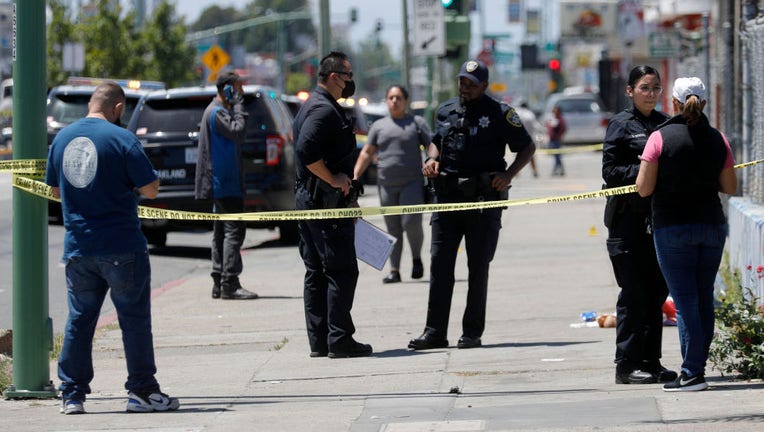
FILE – Oakland police investigate a double shooting in East Oakland, Calif., on June 29, 2022. (Jane Tyska/Digital First Media/East Bay Times via Getty Images)
DETROIT – About 2 in 10 U.S. adults say they or someone close to them has had a personal experience with gun violence, according to a recent poll that shows Black and Hispanic adults are especially likely to have had their lives touched by it.
The poll by the University of Chicago Harris School of Public Policy and The Associated Press-NORC Center for Public Affairs Research found that 54% of Black Americans and 27% of Hispanic Americans reported that they or a close friend or family member experienced gun violence in the last five years, compared with of 13% of white Americans. Overall, 21% of U.S. adults reported a personal tie to gun violence, such as being threatened by a gun or being a victim of a shooting.
“He was at the right place at the wrong time,” said Brown, who is Black.
An acquaintance of a friend pulled a gun during an attempted robbery at a home and shot several people, including Brown’s brother, who she said died instantly. Another person also was slain.
Brown said she doesn’t consider herself a gun lover, but she’s worried enough about becoming a victim of gun violence herself that she’s considering getting a handgun.
“I’m really getting ready to get one. I’ve been to the range,” Brown said. “My dad is a police officer and he wants me to have it.”
The survey was conducted after a stretch of mass shootings across the U.S., from a grocery store in New York, an elementary school in Texas, and a Fourth of July parade in Illinois — along with a smattering of incidents of gun violence in cities across the U.S. that don’t always make national news but leave local communities on edge.
Professor Jens Ludwig, who is director of the University of Chicago’s Crime Lab, said that 1 in 5 people with a friend or family member who was a victim of violence was a “strikingly high number.”
It shows that those who experience gun violence “aren’t the only victims,” he said.
Ludwig compared the way gun violence affects entire communities to the COVID-19 pandemic, noting that the people who died or became very ill from COVID-19 weren’t the only ones affected; kids were kept home from school, businesses closed, and people couldn’t see loved ones.
The same is true with gun violence, Ludwig said. “People are changing the way they live,” he said.
The father of the 21-year-old man charged with killing seven people when he allegedly unleashed a hail of bullets on an Independence Day parade in the Chicago suburb of Highland Park sponsored his son’s firearm owners identification card two and half years ago despite two instances of police being called to their home over threatening behavior.
Robert E. Crimo III, who was charged with seven counts of murder Tuesday, applied for a FOID card in December 2019 at age 19, Illinois State Police revealed in a press release. “The subject was under 21 and the application was sponsored by the subject’s father,” Illinois State Police said. “Therefore, at the time of FOID application review in January of 2020, there was insufficient basis to establish a clear and present danger and deny the FOID application.”
For example, he said, when people who can afford to leave cities where gun violence is a big problem move out in droves, it hurts everyone still there.
He cited Detroit as one example. Gun-related homicides increased from 2016 to 2020, from a rate of 37.6 per 100,000 people to 45.4 per 100,000 people, according to FBI data collected by the pro-gun control group Everytown for Gun Safety. Black people were 2.1 times more likely to die by gun homicides than white people, according to the data.
Following a particularly violent summer weekend in Detroit that saw two dozen nonfatal shootings and seven homicides, Police Chief James White denounced the rising gun violence in the city and across the nation.
“We understand these numbers make media headlines, but to us they represent people,” White told reporters. “These represent families. This represents children. This represents husbands, wives, brothers and sisters. Our Detroit families are in pain. Neighbors near the gunfire are shaken and lives have been forever changed.”
While most Americans say they feel gun violence has increased nationwide and in their states, 59% of Black Americans and 45% of Hispanics said that gun violence is on the rise in their communities, compared with 34% of white Americans. Similarly, people living in urban areas are more likely to say gun violence is rising in their communities than those in suburban or rural areas, 51% to 39% to 27%.
That is in line with recent data from the Centers for Disease Control and Prevention. The data has shown a spike in gun violence since the pandemic, with gun-related homicides increasing across the country in large and small metro areas and in rural areas. The data found Black people are disproportionately impacted by gun violence and are more likely to be the victims of gun crimes or homicides.
Brittany Samuels, a 31-year-old in Detroit, says she still carries physical scars from being shot at age 14 by her uncle, who she said was bipolar and schizophrenic, and fatally shot her grandmother, one of his coworkers and himself.
She said it has also shaped the way she thinks about gun violence and gun ownership, and she feels it is too easy for guns to get into the wrong hands.
Samuels, who is Black, said gun violence in her community has made her rethink where and when to go places, like skipping Detroit’s downtown entertainment district or certain gas stations as certain times.
“You don’t know if someone is going to rob you at gunpoint or if they are going to have a shootout in the middle of the gas station,” she said. “I don’t go when it’s dark — even if it’s in the morning. And you really won’t catch me at a gas station that’s not lit up.”
Diego Saldana, 30, of Baldwin Park, California, in the Los Angeles metro area, said he found himself facing a 9mm handgun during an attempted robbery six months ago. He feels gun violence is on the rise and believes it’s likely he will be a victim of gun violence again in the next five years.
“I think it’s due to the (poor) economy — people are desperate for easy money,” said Saldana, who is Mexican. “People … are stressing about stuff and expressing it with violence. Everybody is on edge.”
Price reported from New York. AP Polling Reporter Hannah Fingerhut in Washington and AP writer Sara Burnett in Chicago contributed to this report.
The Lincoln Rifle
This gold-mounted, engraved Henry rifle was presented to Abraham Lincoln in an effort to obtain his influence in their purchase for the war effort. This rifle was awarded the National Rifle Association Collectors Society Gold Medal as an outstanding historical firearm.General HistoryThe Henry, the first practical, lever action, repeating rifle, is the immediate forerunner of the famous Winchester rifles. About 14,000 were made between 1860 and 1866 by the New Haven Arms Company. Only about 1,731 Henry rifles were purchased by the Ordnance Department between 1862 and 1865. A number of units in the West purchased them at their own expense. It was especially popular in Kentucky, Illinois, Missouri and Indiana. The 1st Maine and 1st District of Columbia cavalry regiments are known to have been issued Henry rifles. Said one confederate soldier, “It’s a rifle you could load on Sunday and shoot all week long.”
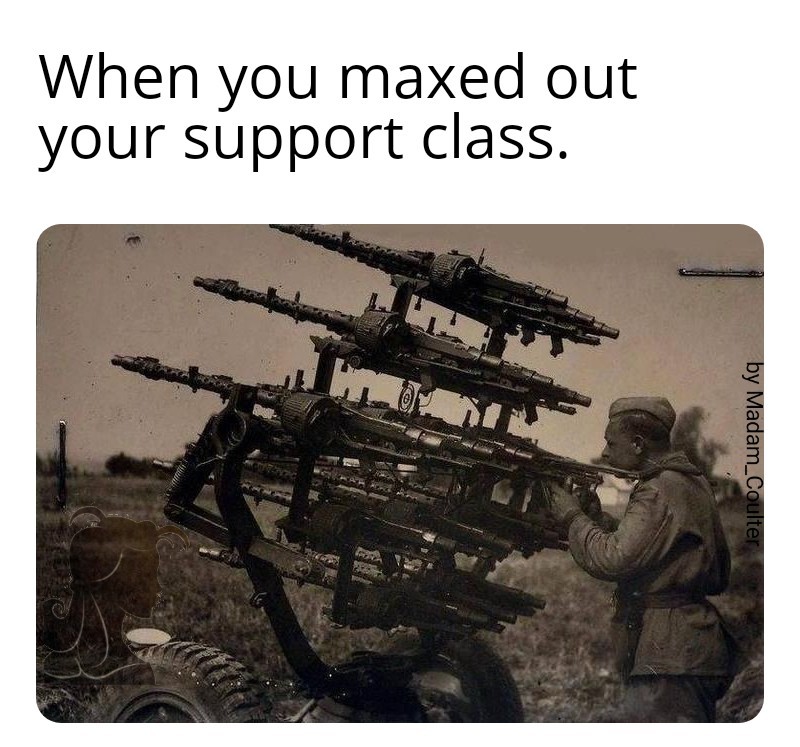

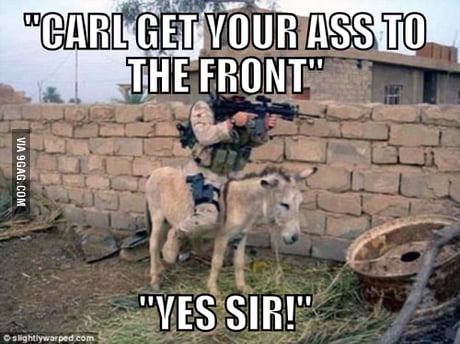
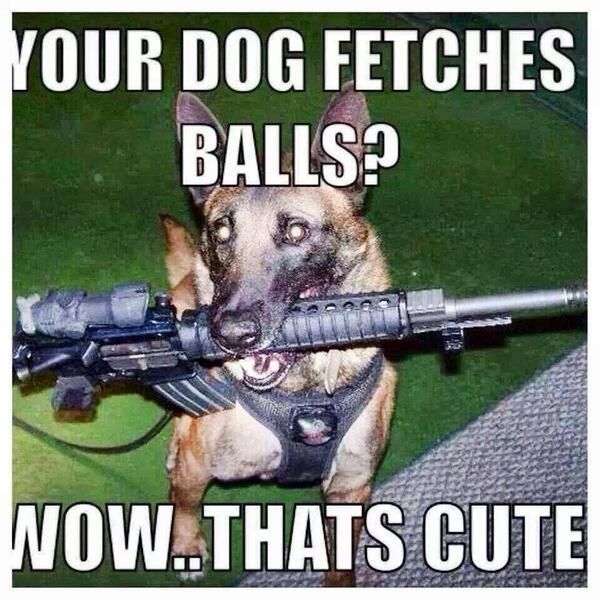
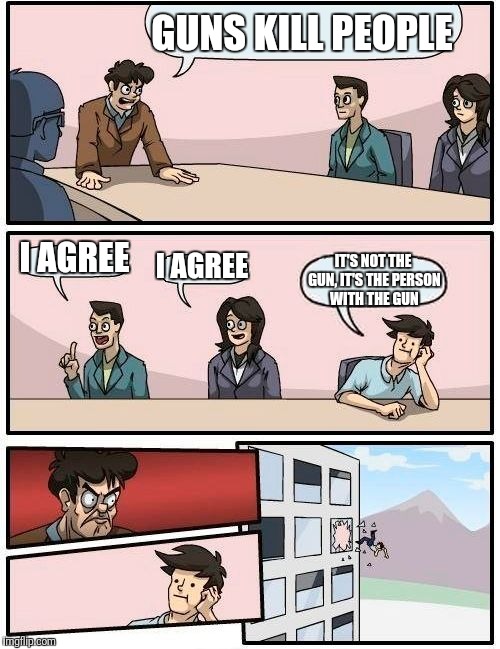


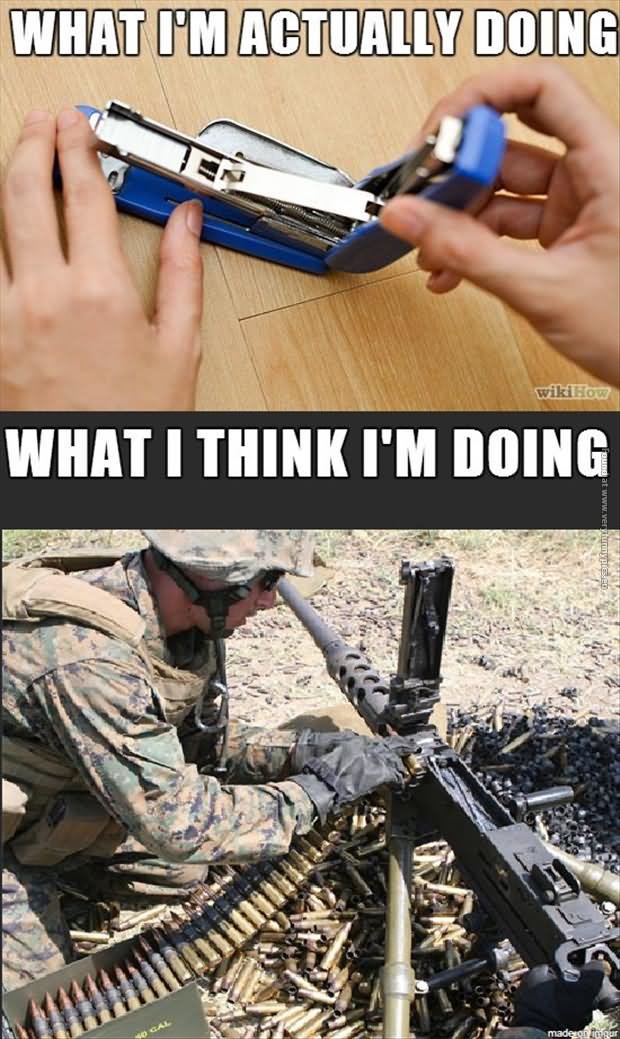

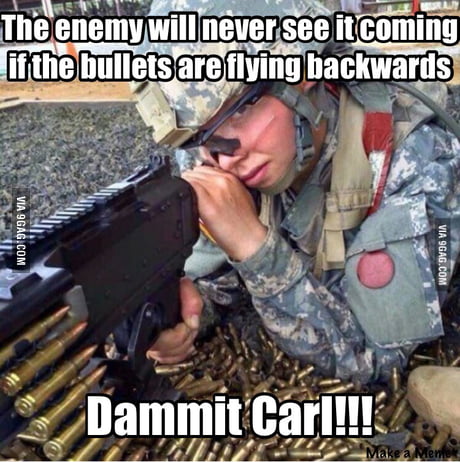
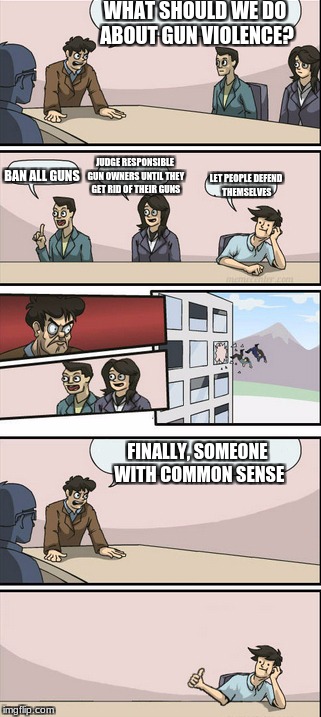
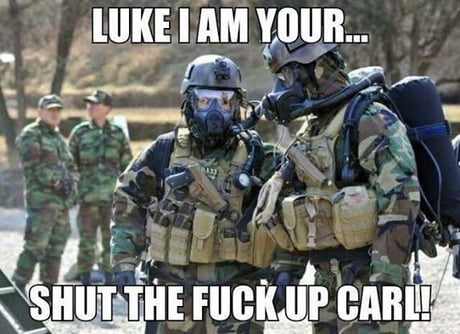
NRA Gun Of The Week: SIG Sauer P322


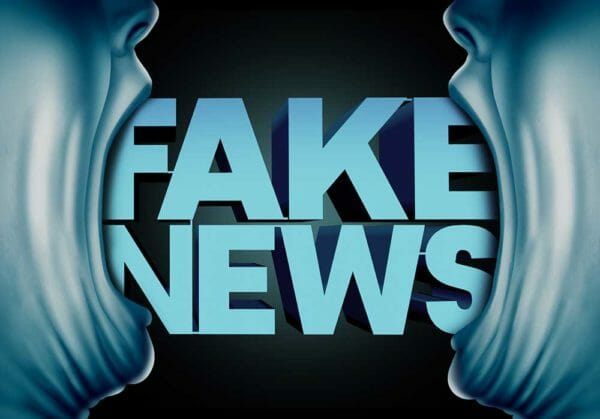
U.S.A. –-(AmmoLand.com)- A new Rasmussen survey revealed how 62 percent of likely voters “think the problem of bias in the news media is getting worse,” and also noted 52 percent of voters “don’t trust the political news they’re getting, compared to 32% who do.”
According to the Rasmussen survey, “More Republicans (76%) than Democrats (54%) or unaffiliated voters (54%) consider ‘fake news’ a Very Serious problem in the media.” Those “unaffiliated” voters often identify as “Independents.”
Perhaps nowhere is the belief of media bias more acute than when it comes to reporting about firearms and crime, and there may be no better recent example than an Associated Press report about an actual survey on gun control in which the term “gun violence” was used 11 times over the course of 1,130 words, sometimes appearing twice in the same paragraph. There was also a reference to “gun killings”—as though firearms were actually pulling their own triggers—and a reference to Joe Biden’s gun control legislation passed earlier this summer, describing it as a “gun safety” measure.
Yet, when a homicide involves the use of a different tool, perhaps a knife or blunt instrument, the press does not report that as “knife violence” or “hammer violence,” instead more accurately reporting a victim was “fatally stabbed” or “bludgeoned.”
References to “gun violence” from Anti-Second Amendment activists purposely demonize firearms and shift blame away from the perpetrators of violent crimes. The term creates the impression such crimes are the gun’s fault, not the person pressing the trigger.
There was only a single use of the term “gun control” in the AP article, and a notation about the gun rights victory handed down by the Supreme Court in late June stating, “a conservative majority on the Supreme Court expanded gun rights, finding a constitutional right to carry firearms in public for self-defense.”
Gun rights advocates contend the high court didn’t “expand” anything but simply restored the right to bear arms without having to show “good cause” in order to exercise that right. The court also didn’t “find” any constitutional right but did find the “good cause” requirement to be unconstitutional.
Perhaps nothing more clearly underscored the problem than the reaction in mid-July to published reports, including one here at Ammoland News, about a revision in the newest Associated Press Style Book, considered the guide to journalists around the world, addressing how published reports should refer to semi-auto rifles.
“The preferred term for a rifle that fires one bullet each time the trigger is pulled, and automatically reloads for a subsequent shot, is a semi-automatic rifle. An automatic rifle continuously fires rounds if the trigger is depressed and until its ammunition is exhausted.
“Avoid assault rifle and assault weapon,” the AP explains, “which are highly politicized terms that generally refer to AR- or AK-style rifles designed for the civilian market, but convey little meaning about the actual functions of the weapon.”
At the time this revision was being debated, Alan Gottlieb, chairman of the Citizens Committee for the Right to Keep and Bear Arms observed, “It will be interesting to see if the media now challenges politicians and anti-gun lobbyists whenever they use such terms.”
So far, it doesn’t appear the press is making any such effort, instead just allowing politicians and anti-gun lobbyists to continue using such phrases and quoting them obediently.
However, there was one hint of progress in a story appearing in The Hill about the announcement from the Bureau of Alcohol, Tobacco, Firearms and Explosives that it is “going after so-called ‘ghost guns.’” The term “ghost guns” appears to be an invention from the gun prohibition lobby designed to demonize privately-built firearms, which is a tradition dating back centuries.
Additionally, Rasmussen notes “majorities of both Republicans (67%) and unaffiliated voters (59%) don’t trust the political news they’re getting.” On the other hand—and not surprisingly—55 percent of Democrats “trust the political news they’re getting.”
Breaking things down even farther along political lines, 76 percent of Republicans and 68 percent of Independents “believe the problem of bias in the news media is getting worse,” while only 44 percent of Democrats think so.
It isn’t just the appearance of bias in published reports, but in the reluctance to publish or do stories based on news releases from gun rights advocacy groups. Many newspapers also years ago stopped accepting classified advertising about firearms.
Coincidental to this report, the National Rifle Association’s Institute for Legislative Activity posted an article online noting, “Gun control advocates have renewed a longstanding plan to have the Federal Trade Commission (which regulates commercial speech) punish firearms manufacturers for how they advertise firearms. A petition filed with the FTC by several large firearm prohibition organizations claims that any suggestion firearms provide protection to their owners or make their homes safer is tantamount to false advertising. The petition also suggests that the use of patriotic, militaristic, or macho images and languages in firearm advertising – the same themes used to sell everything from beer to vehicles to sunglasses – is deliberately being used to appeal to insurrectionists and mass shooters.”
While the battle may have been about the Second Amendment, it is now shifting to the First Amendment, with the establishment media pushing a particular narrative rather than simply reporting the news and allowing the readers and listeners to decide and reach their own conclusions.
About Dave Workman
Dave Workman is a senior editor at TheGunMag.com and Liberty Park Press, author of multiple books on the Right to Keep & Bear Arms, and formerly an NRA-certified firearms instructor.

